Many people use coffee grounds as mulch, claiming using coffee grounds has tremendous benefits, including preventing weeds, aerating and acidifying the soil, providing nitrogen, and attracting earthworms
Indeed, coffee grounds have rich organic materials that are good for most plants. While some plants thrive with coffee grounds, using coffee grounds will impede other plants. So, which plants like coffee grounds and which ones don’t?
Read on to find out the most common plants that do well with coffee grounds, and how to effectively use coffee grounds in your garden for optimal results.
You might be wondering how you can use coffee grounds as fertilizer; here is an article I wrote that answers this question.
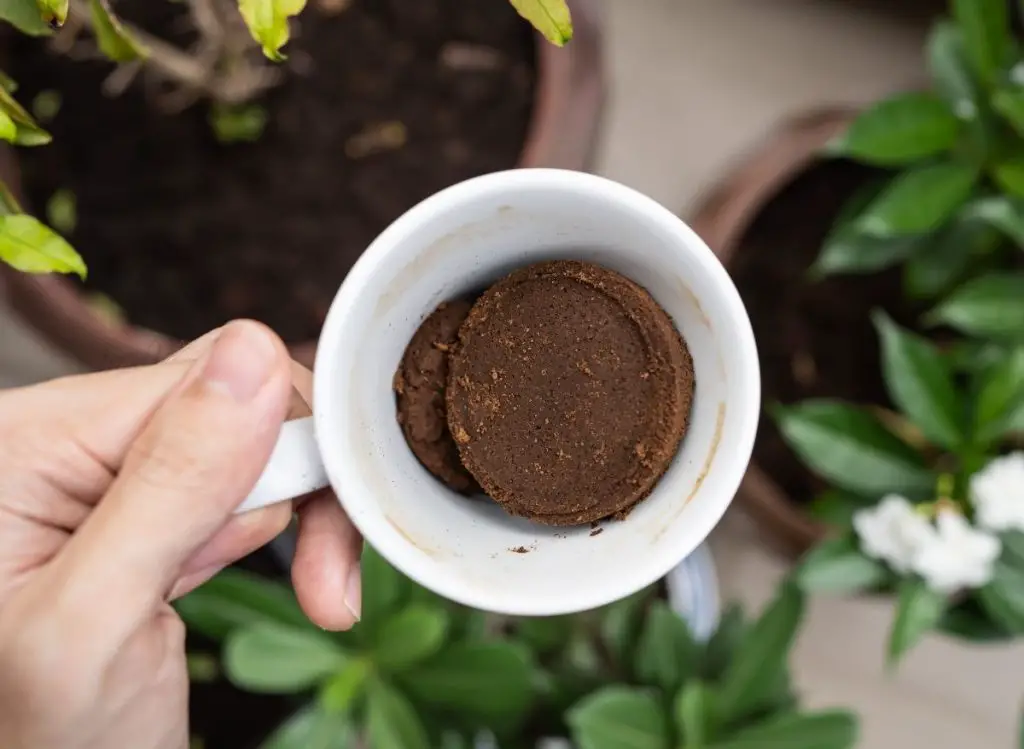
Let’s understand; what Coffee Grounds is?
Coffee beans are seeds that have nitrogen-rich proteins required for plants’ germination and growth. Protein contains over 10% of coffee grounds. In addition, the carbon-to-nitrogen ratio (around 11:1) of coffee grounds can be ideal for plant and soil nutrition, according to the University of Arizona.
Soil-borne bacteria and fungi break down the various chemical constituents of coffee grounds after several months. Earthworms also contribute to transforming coffee grounds in the soil.
Earthworms ingest coffee grounds and deposit them deep in the soil, contributing to improved soil structure and aggregation. Humic substances, essential chemical and structural soil components, are eventually created through organic matter degradation, including the degradation of coffee grounds.
Before jumping into the evaluation of plants according to their suitability for coffee soil, we must understand what coffee grounds, in actuality, it is full of organic material, nitrogen, acid, and caffeine.
Adding it to your ground as fertilizer can alter the pH, which is suitable for a few plants. Also, it has caffeine, which most plants like. Plants like coffee or chocolate effects to cut down their competition and increase the development process. It can directly affect the plant’s growth.
In simple words, the coffee ground is a perfect choice for acid-lover plants such as Blueberries. Although it’s a very effective method for planting, it’s not suitable for all kinds of plants.
Is Ground Coffee Acidic?
Contrary to popular beliefs, coffee grounds are not always acidic. According to University of Arizona findings, coffee grounds decomposition pH is between 4.6 to 8.4 (mildly acidic to somewhat alkaline).
In addition, coffee grounds’ decomposition pH also fluctuates over time; therefore, we shouldn’t assume that it always stays acidic.
Are Coffee Grounds Good For Your Garden?
In general, coffee grounds are good to add to your garden. Coffee grounds help prevent common fungal rots and wilts, lower the risk of soil-borne diseases (including Pythium, Fusarium, and Sclerotinia), and prevent bacterial pathogens (E. coli and Staphylococcus).
In addition, coffee ground composts and mulches improve some seeds’ germination.
For better optimum results in using coffee grounds:
- Coffee ground content should be less than 20% of your total compost volume. More than 30% has usually been damaging to your garden.
- Remember, coffee grounds’ pH levels will fluctuate over time.
- Don’t assume that coffee grounds’ pH will always create an acidic compost.
- Add other types of nutrients to your compost for balanced.
Since coffee grounds are generally finely textured and easily compacted in mulch, they can block moisture and air movement, mainly when applied in thick layers. Researchers do not recommend using pure coffee grounds as mulch.
Instead, the best way to use coffee grounds is to use a thin layer (no more than half an inch (1.27 cm)) of coffee grounds and cover it with a thicker (four inches (10.16cm) layer of coarse organic mulch-like wood chips.
Advantages of Gardening With Coffee Grounds
- Coffee grounds ensure nitrogen which is an essential ingredient used in most fertilizers. It’s rich in worms, so it’s a better choice if you want to encourage worms.
- Also, if you are planting with coffee grounds, you don’t need to worry about watering. Because it can retain the water of your plant regularly so, you can water your plant with coffee. I mean, you don’t need to water your indoor plant regularly.
- You can prevent your plant from pests such as snails and slugs with the help of gardening with the coffee soil. Also, if you don’t want your cats to dig around your plant, add some coffee to the soil. It’s a better solution for this problem.
- Using coffee grounds is an ideal fertilizing approach for most house plants. It contains nitrogen and micronutrients that are necessary for the growth of your indoor plants.
- Coffee grounds can reduce your cost of buying nutrients for plants because they have all the required materials.
- Coffee grounds can be a good addition to your garden and compost pile because they offer tremendous benefits, including reducing the number of organics going to the landfill.
- Coffee grounds enhance soil tilth and structure. In addition, coffee grounds are an organic nitrogen source for composting.
List of Plants That Thrive in Coffee Grounds
Generally, for coffee ground gardening, you need coffee. You can use coffee in your soil and enjoy a great gardening experience. Do you know it’s a perfect fertilizing formula for most plants?
Yes, there are several plants that can flourish in coffee-mixed soil. It is perfect for indoor or house plants. Here is a list of plants that thrive in coffee grounds.
1- Philodendron (Philodendron spp)
Philodendrons are among the most common house plant and can be found in different sizes, shapes, and colors. Philodendron is native to South America and Central America. They grow in close to neutral pH levels, so using coffee grounds will help them thrive.
Coffee can level up the growing process of this plant. Also, coffee grounding can keep it flexible and strong all the time. It can also use in offices and apartments.
It doesn’t need extra care because it’s getting all the nutrients and required water from the method of coffee plantation.
| Mature Size | Depending on the variety, philodendron can grow between 12 to 240 inches tall and 12 to 72 inches wide. |
| Light requirements | Medium to bright indirect sunlight. |
| Soil pH | Philodendrons thrive in a pH between 5.0 to 6.0. |
| Soil Type | Grows well in a rich, well-drained, and loamy soil. |
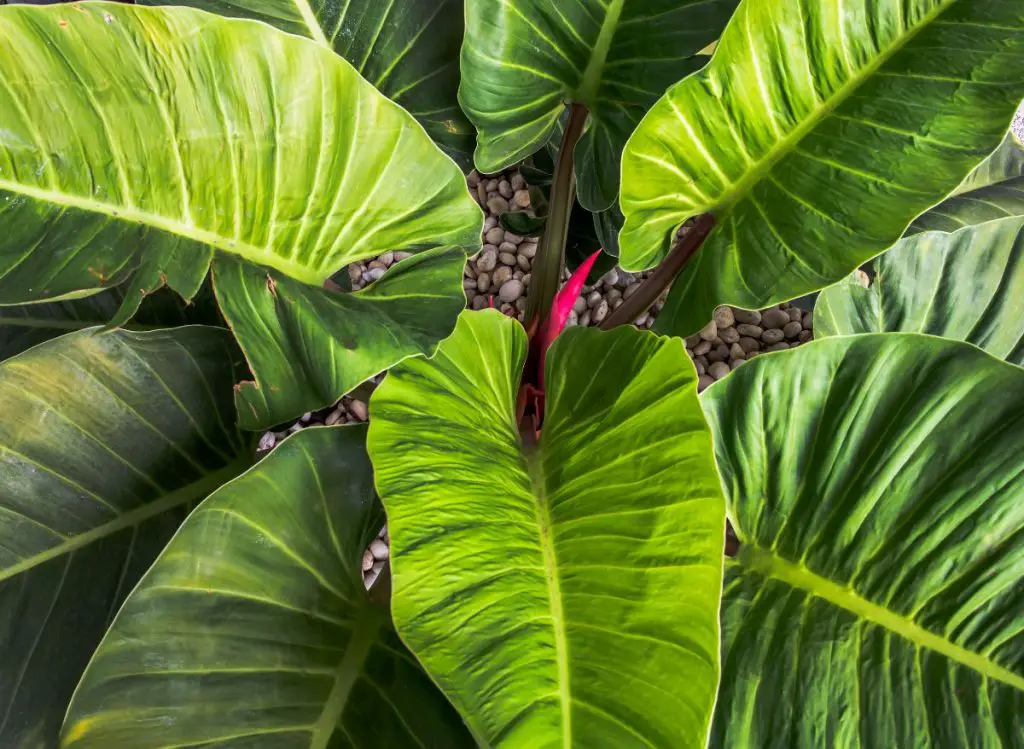
2- Snake Plant (Sansevieria)
Snake plants are native to West Africa. You need the best soil, full of nutrients for the snake plants. It is a great indoor plant that prefers a 5.5 to 7.5 pH level in the ground. These plants require low maintenance and less attention.
They acquire occasional watering and moderate light. So, coffee liquid watering is a good idea. Don’t throw your coffee beans or coffee; mix it in water and feed your snake plant with it.
| Mature Size | Snake plants grow about six inches to 8 feet tall |
| Light requirements | Snake plants thrive in bright and indirect light and can sometimes tolerate some direct sunlight. They also do well in shadowy corners and other low-light areas of the house |
| Soil pH | Even though Sansevieria prefers a pH between 5.5 to 7.5, it also does well under a soil pH range of 4.5 to 8.5, according to the University of Florida. |
| Soil Type | To thrive, Sansevieria requires a plentiful Nitrogen, present in coffee grounds. Snake plants enjoy sandy and well-drained soil. |
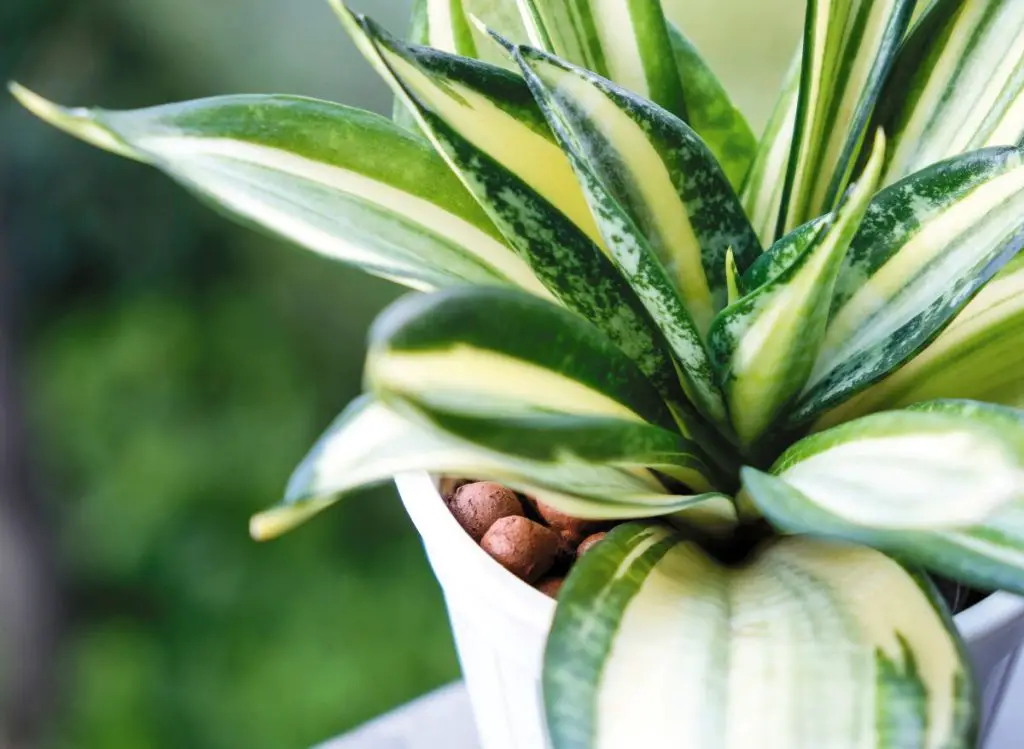
3- Christmas Cactus (Schlumbergera x buckleyi)
Christmas cactus is usually found in the coastal mountains of southern Brazil. Coffee soil gardening renders an efficient drainage system to your Christmas cactus.
The micronutrients in coffee soil can foster the plant’s nourishment to bloom and grow. Regardless of the variety, holiday cactus plants can be started indoors as a houseplant any time of the year until the summer, when you can replant or move them outdoors.
With the proper care, holiday cactus plants will thrive while elevating the beauty of your garden or living space.
| Mature Size | Christmas cactus can grow between 72 to 144 inches tall and 72 to 288 inches wide |
| Light requirements | Succulent, Christmas cactus needs at least eight days of 16 hours of dark and eight hours of light each day. Avoid turning on the lights at night where you place the plant, even for a short period of time, according to Michigan State University. |
| Soil pH | It thrives in neutral to acidic pH levels (between 5.0 to 7.0) |
| Soil Type | Grows well in a rich, well-drained, and loamy soil. |
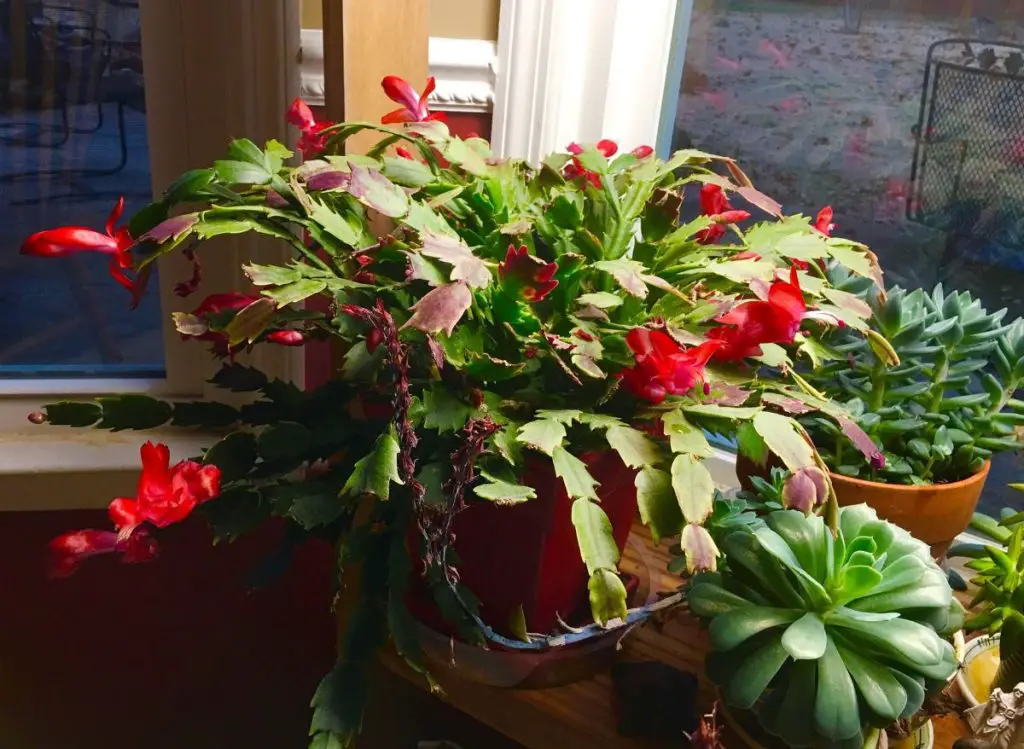
4- Cyclamen (Cyclamen persicum)
Cyclamen is a beautiful house plant native to Europe, Eastern Iran, Mediterranean Basin, and Somalia; it’s a beautiful plant with attractive green leaves, white, red, and tones of pink-colored flowers.
It can bloom better in the coffee soil. Keep in mind that Cyclamen is known to be toxic to animals and humans.
Cyclamen plants need high humidity and moist soil to thrive and bloom. Ensure you water cyclamen plants thoroughly when the soil looks and feels dry on the surface. Let the soil dry out before watering again.
Avoid watering cyclamen plants via the center of the plant, which may lead to rotting if it remains too wet, suggests the University of Wisconsin-Madison.
| Mature Size | It grows between 6 to 9 inches tall and wide |
| Light requirements | Cyclamen plants do well in bright filtered light. Exposing the plant to direct sunlight in the summer might be too harsh. In winter, the plants prefer full light. |
| Soil pH | The best pH level for Cyclamen plants is around 5.8. |
| Soil Type | Cyclamen plants prefer loamy, rich, moist, and well-drained soil. |
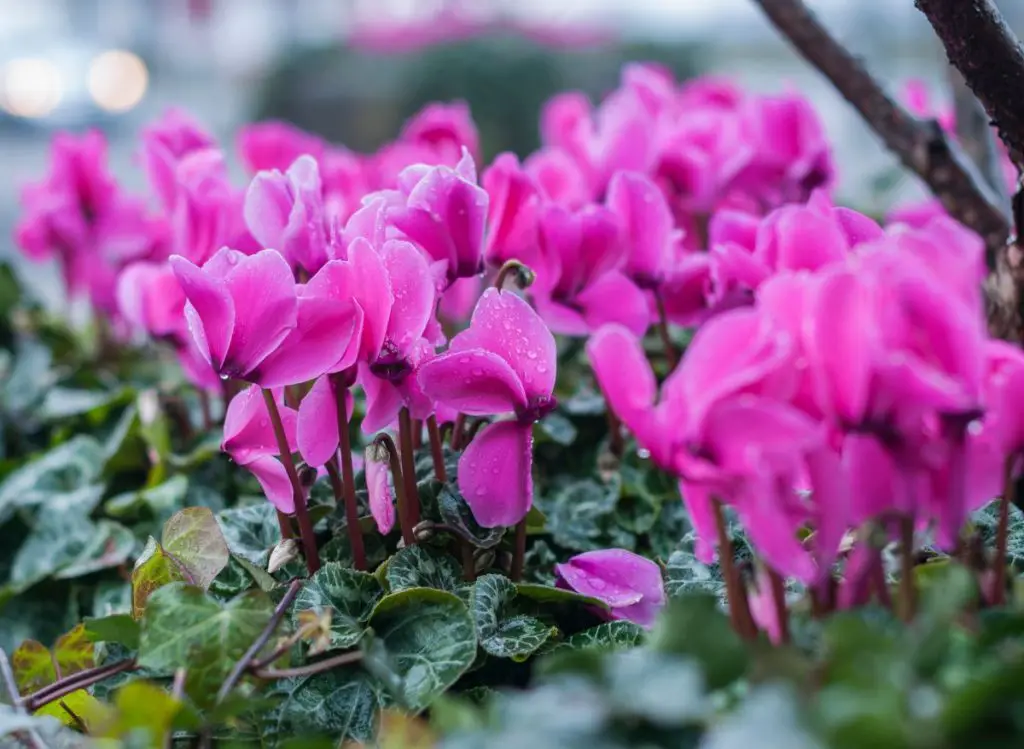
5- Jade Plants (Crassula ovata)
Jade plants are known to be lucky or money plants. They are native to southern Africa. Jade plants look very charming because of their beautiful flowers.
Coffee grounding is best for them because it ensures thick stern growth and retention of water very smoothly.
Jade plants are easy to grow succulent and store water in their leaves, stems, and roots. In mild climates, jade plants have been used as indoor ornamental and landscape plants, found the University of Wisconsin-Madison.
Jade plants make a good houseplant as they grow well in the restricted root space of containers. In addition, they are relatively slow-growing and tolerate neglect.
| Mature Size | Jade plants grow 36 to 72 inches tall and 24 to 36 inches wide. |
| Light requirements | Medium to full sun exposure. |
| Soil pH | Jade plants prefer neutral to acidic pH. |
| Soil Type | They do well in rich and well-drained soil. |
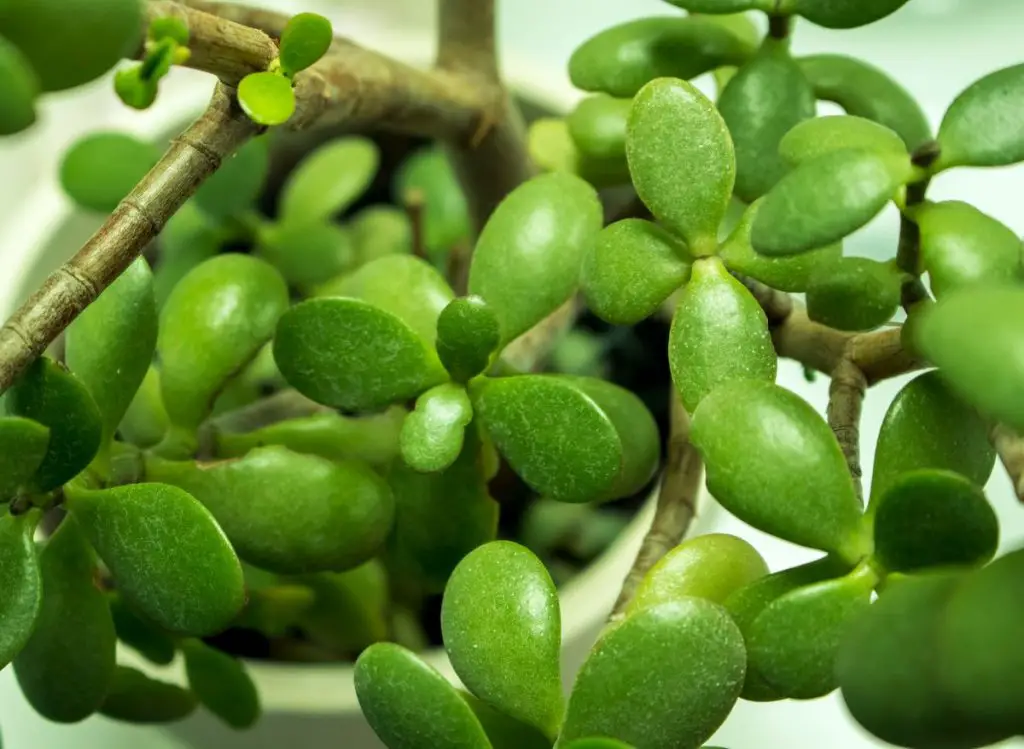
6- African Violet (Saintpaulia)
African violet is usually found in Africa. They need excessive nitrogen and acid as compared to other acid-loving plants. So, the coffee gardening method is a better approach to feeding them.
African violets are among the world’s most popular houseplants because they require low maintenance and thrive in bright, warm, and humid environments.
| Mature Size | Depending on the variety, African violets grow between 6 to 16 inches, according to the University of Georgia. |
| Light requirements | African violets prefer indirect sunlight, as direct can burn their leaves. For best results, put them near a north- or east-facing window. |
| Soil pH | African Violets thrive at a pH between 5.8 and 6.2. |
| Soil Type | African violets grow best in loose, rich, porous, and well-draining soil. |
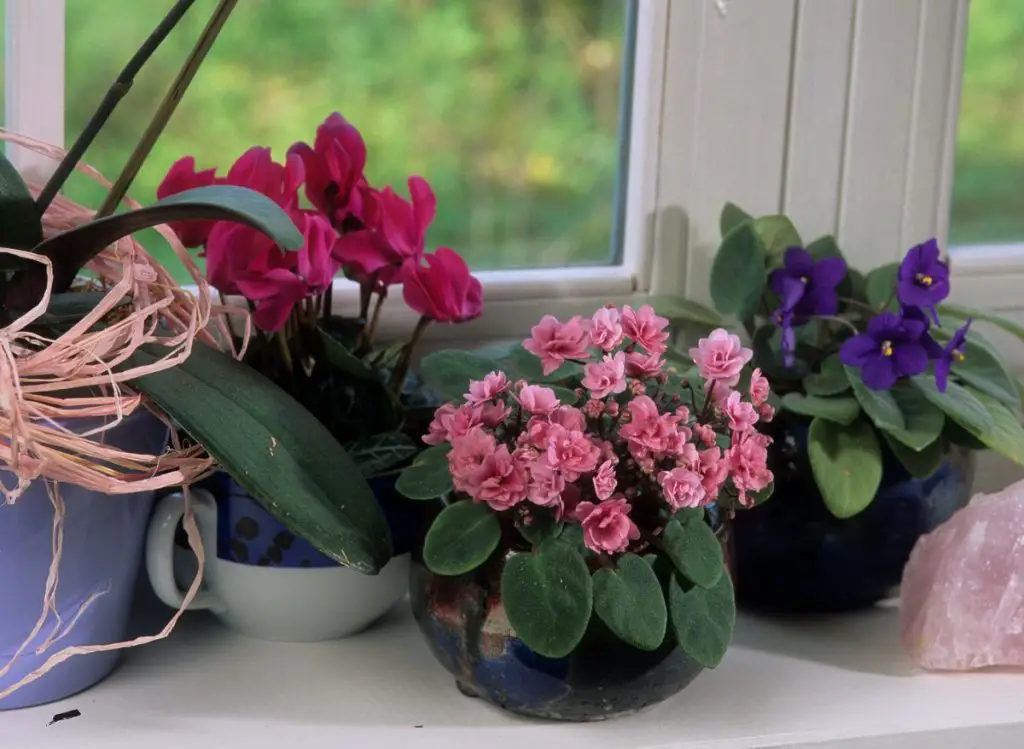
7- Miniature Rose (Rosa spp.)
Miniature roses grow relatively quickly and work well on a border or garden edging. They are also incredibly lovely as specimen plants in containers. You can use liquid coffee for watering miniature rose plants.
It’s a fascinating and charming plant that can change your mind if you are feeling depressed. A miniature rose is suitable for you if you want to ensure an elegant vibe in your garden.
| Mature Size | Miniature rose plants grow 12 to 24 inches tall and 12 to 24 inches wide. |
| Light requirements | Full sun |
| Soil pH | Neutral to acidic |
| Soil Type | They thrive in moist to well-drained soil |
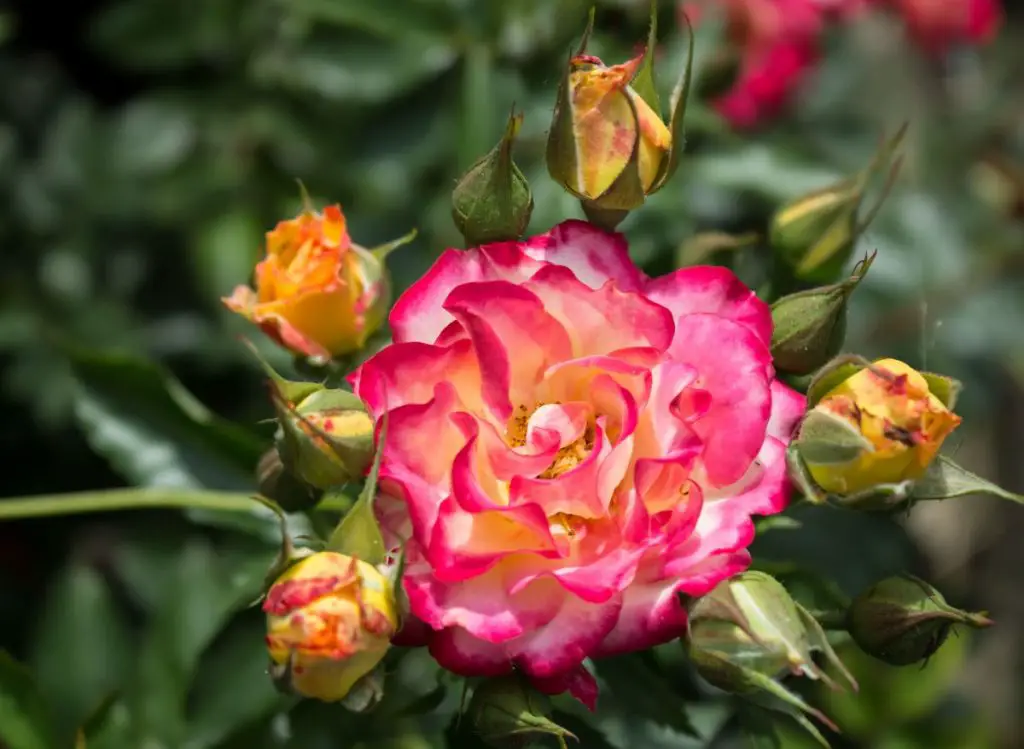
8- Golden Pothos (Epipremnum aureum)
Golden pothos plants are refreshing indoor plants and can refresh the surroundings where they’re placed. You can grow them in a hanging basket with some coffee-mixed soil. They require enough light and some coffee for better growth.
| Mature Size | Photos plants can grow 20 to 40 ft. long, 3 to 6 ft. wide |
| Light requirements | They prefer full sun to partial shade |
| Soil pH | Neutral to acidic |
| Soil Type | Moist, rich, and sometimes well-drained soil |
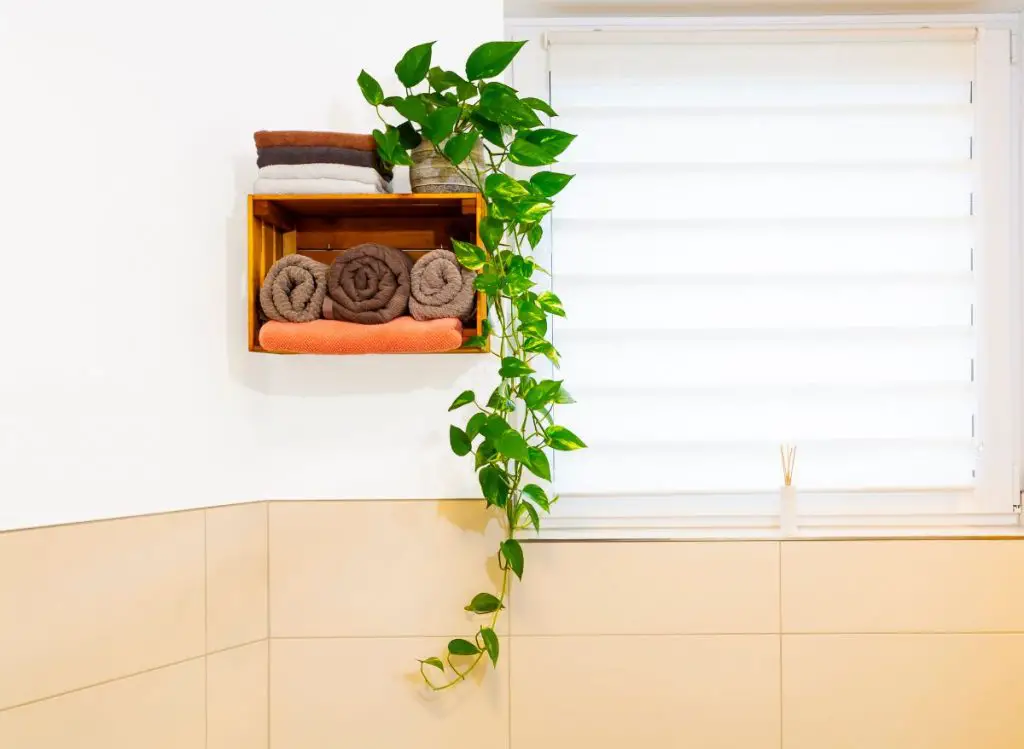
9- Tomato (Solanum Lycopersicum)
Tomatoes require lots of sunlight to thrive, and coffee grounds can help. To give a boost to your tomatoes:
- Scatter some used coffee grounds around each tomato plant when they start growing
- Later when the first fruits come.
- And then sprinkle some used coffee grounds again once or twice when they are fruiting.
| Mature Size | Most modern tomatoes typically grow between 3 to 6 feet tall, according to the University of Illinois Extension. |
| Light requirements | They do well in areas that receive full sun most of the day. |
| Soil pH | Tomatoes thrive in slightly acidic soil with a pH of 6.2 – 6.8. |
| Soil Type | Tomato plants will grow better in well-drained areas |
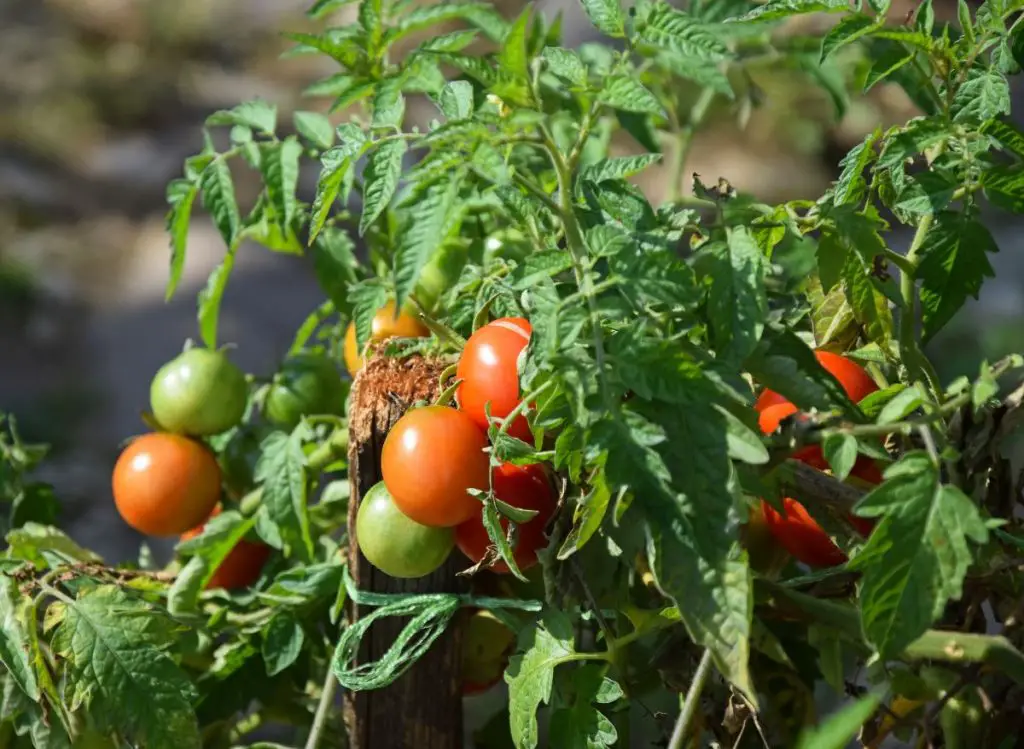
10- Broccoli (Brassica Oleacea Var. Italica)
Broccoli is one of the most popular and tasty vegetables grown at home. Broccoli is also known to be super nutritious and full of vitamins, and it also enjoys an occasional boost of energy from coffee grounds.
Besides being high in minerals, vitamins, and antioxidants, broccoli also helps lower cancer risk, enhances bone and skin health, promotes immune health, and helps digestion.
| Mature Size | Broccoli grows between 2 to 3 feet (about 0.61 to 0.92 cm) tall and 2 to 3 feet (about 0.61 to 0.92 cm). |
| Light requirements | Broccoli plants do well in full sun but can also tolerate light shade |
| Soil pH | pH between 6.0 to 7.5. |
| Soil Type | Broccoli prefers well-drained soil with plenty and consistent moisture. |
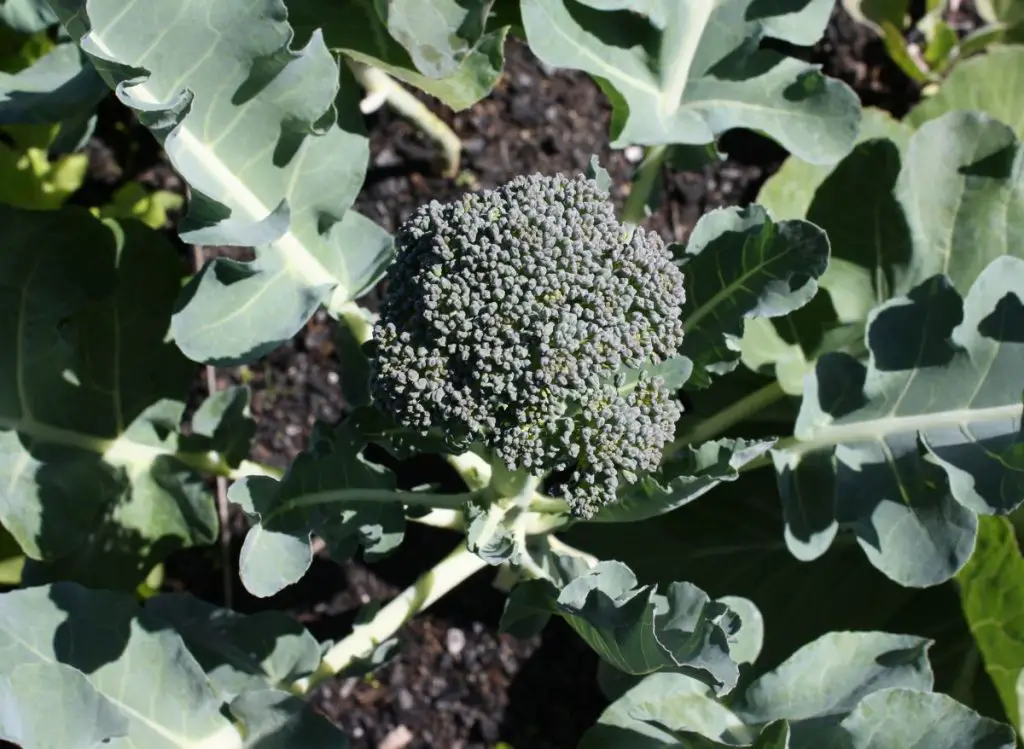
11- Peppers (Capsicum Annuum)
If you are a pepper lover, whether sweet, hot, or even for the beauty it brings to your garden, consider giving it some love back with coffee grounds to help it thrive.
| Mature Size | Depending on the variety, pepper plants grow between 1 to 5 ft. (30.48 to 152.4 cm) tall and 1 to 3 ft. (30.48 to 91.44 cm) wide. |
| Light requirements | Peppers plants thrive in areas that receive at least 6 hours of sunlight daily. |
| Soil pH | Between 6.0 to 6.8 (slightly acidic) |
| Soil Type | Peppers plants do best in heavier, rich, and well-drained soils. |
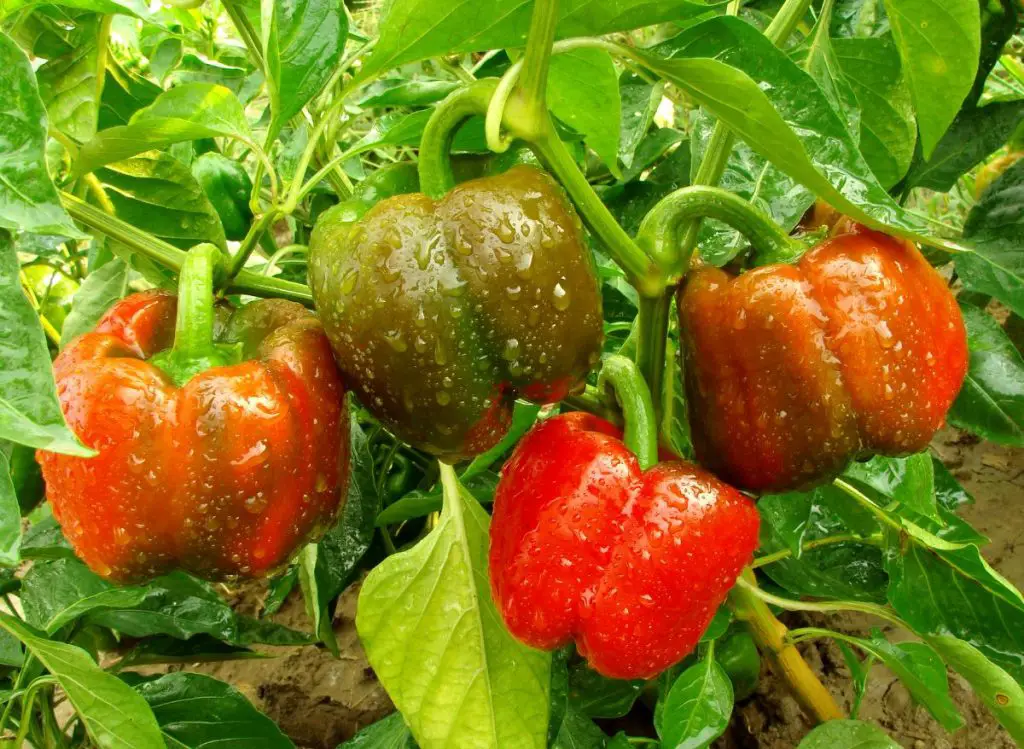
Plants That Do Not Thrive In Used Coffee Grounds
Although it is beneficial for plantation purposes, most plants require excessive nutrients and minerals, so; Coffee is the best option to fulfill this need. However, there are a few plants that don’t like coffee grounds. Let’s talk about those plants that do not like used coffee planting.
Coffee contains acid, which is not suitable for each plant. Some plants, such as; orchids, lavender, sago palm, and century plant, don’t like coffee.
1- Lavender (Lavandula)
It’s one of those plants that don’t like many acids. Lavender likes direct sun, with hot & dry and sandy soil. Also, it doesn’t like excessive water.
Lavenders can grow in containers. Coffee soil is not perfect for lavenders because they don’t prefer much water and acids.
| Mature Size | Lavender is a small shrub typically growing 20 to 24 inches tall and wide. |
| Light requirements | Lavender needs full sun to thrive. |
| Soil pH | Lavender requires an alkaline pH of about 6.5 to 8, and it will not do well in acidic soil. |
| Soil Type | Lavender grows in rocky, sandy loam, well-drained and alkaline soils. |
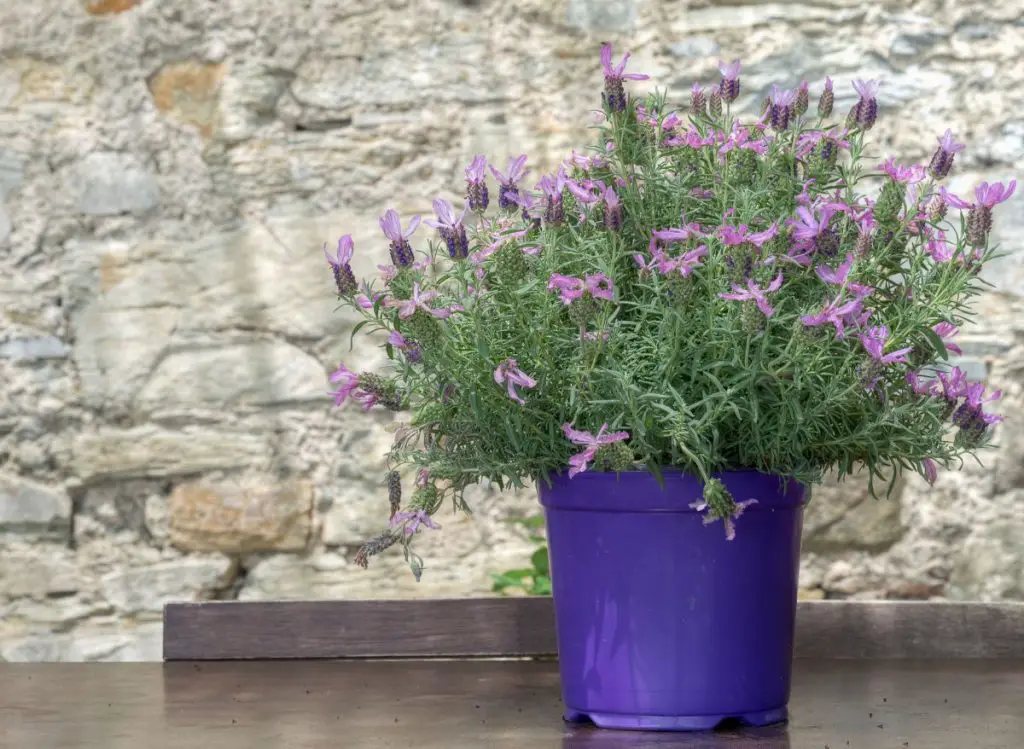
How To Use Coffee Grounds In Garden
- Start by spreading the coffee grounds directly on your garden’s soil.
- Keep in mind that if you let coffee grounds become dry, they can block water from reaching your plants’ roots in the same way as peat moss that becomes dry.
- Use leaves, compost, or bark mulch to cover the coffee grounds.
- For better results, an equal amount of raw materials, including you add to the compost pile layers:
- 1/3 leaves,
- 1/3 fresh grass clippings
- And 1/3 coffee grounds.
- Ensure you properly mix all the ingredients.
- For optimal results, add coffee grounds as part of a static compost pile by always making sure you add an equivalent amount of a carbon source, including shredded paper or dry leaves.
- When adding coffee grounds directly into the soil, make sure you add a nitrogen fertilizer simultaneously. The reason is that coffee grounds promote the growth of microorganisms in the soil, which also need nitrogen for their growth and reproduction.
- While the microorganisms are breaking down the coffee grounds, the extra nitrogen in the fertilizer is a healthy and excellent source of nutrients for your plants.
Can You Mix Coffee Grounds With Potting Soil?
Mixing coffee grounds with potting soil is an excellent way to supercharge your plants’ growth. For optimal results, spread coffee grounds on the surface of the potting soil at the bottom of a plant, suggest Oregon State University.
Since the microorganisms that break down coffee grounds require nitrogen to survive, spreading a nitrogen fertilizer over the coffee grounds will provide better results.
Ensure you add an equal amount of coffee grounds, leaves, and fresh grass clippings, about:
- 1/3 leaves,
- 1/3 fresh grass clippings
- And 1/3 coffee grounds.
Coffee grounding is suitable for most indoor plants; you can easily mix the Coffee in potting soil. It’s a simple, quick, and easy way to grow plants with an efficient approach.
Is Coffee Planting Suitable For Potted Plants?
Coffee grounds are highly beneficial for indoor plants because of their high nitrogen content, micronutrients, pH level, and high-water retention. The perfect best approach to utilize coffee planting on your indoor plants is to compost!
Another good way of using coffee grounds is adding them to a homemade potting soil mixture.
Coffee grounds act as efficient fertilizers that can ensure outstanding results. Coffee soil has rich organic materials that are good for most plants If you use this popular method very well, you can boost your gardening experience.
Can You Put Coffee Grounds On Plants Directly?
Adding coffee grounds directly to the plant helps enhance soil structure and tilth. Additionally, coffee grounds add organic nitrogen source to your compost pile.
Coffee mixed soil or liquid coffee watering is the best fertilizing method. It can ensure ultimate benefits and reduce the cost of nutrients, extra fertilizing material, and acids. Although it’s an excellent method to grow plants, remember that it’s not suitable for all the plants.
You can scratch it into the top some inches of soil, sprinkle the coffee on top, and leave it for some time.
Some plants don’t like coffee and some like coffee. So before applying this fertilizing method and do some research according to your plant. Coffee grounding is a perfect approach if it’s an acid lover who wants excessive water and nutrients.
Final Thoughts
Using coffee grounds in a garden has its benefits (and downsides). Coffee can interfere with plant growth, but at the same time, it may help keep away certain pests or adjust the pH of your soil helpfully.
Plants such as carrots, cabbage, roses, and hydrangeas like coffee grounds, but avoid using them on lavender and clovers. Overall, adding coffee grounds to your garden can supercharge your plants’ growth.


